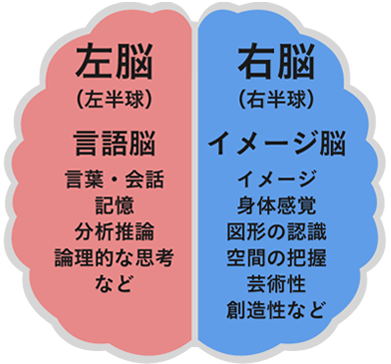ライフハックとしてではなく、英語学習にも極めて有用なのが、著名人が10分程度のプレゼンを行うTEDです。
TED Talksとは、あらゆる分野のエキスパートたちによるプレゼンテーションを無料で視聴できる動画配信サービスのことです。10年ほど前にサービスが開始されてから、政治、心理学、経済、日常生活などの幅広いコンテンツが視聴できることから人気を集めています。
RareJob English Lab
TEDは4000を超える膨大な数の動画があります。しかし慣れないうちは、動画の探し方や視聴のコツが分かりませんよね。この記事では、数多くのTEDを見てきた管理人(塩@saltandshio)が、心を揺さぶられたトークをあらすじと一緒にご紹介します。
ビジネス英会話を効率よく身につけたい方におすすめスクール
シェーン英会話
シェーンは1977年の創業以来、ネイティブ講師が英語を英語で教える「直接教授法」を採用しています。首都圏におけるスクール拠点数は、ネイティブ講師の英会話スクールでNo.1。駅から近いスクールが多いので通いやすく時間を有効に使えます。
スピークバディ パーソナルコーチング
1日1時間の短期集中トレーニングで、あなたの英語力向上をコーチが全力でサポートします。あなたの英語の世界が、劇的に変わります。
ミーア・ナカムッリ:バイリンガルの脳が持つ利点
明らかに、2つ以上の言語を知っていると一部の物事はもっと楽にこなせます。たとえば旅行や字幕なしで映画を見ることとか。でもその他に、バイリンガル(またはマルチリンガル)の脳にはどんな利点があるのでしょうか?ミーア・ナカムッリはバイリンガルの脳に見られる3つのタイプについて詳しく説明し、複数の言語を知っていることが脳を健康な状態に保ち、複雑かつ活発に働かせておくうえでどう役立つのかを示します(約5分)。Mia Nacamulli / he benefits of a bilingual brain.
[PR]無料体験レッスン実施中!全国208校、創業40年の老舗英会話スクール【シェーン英会話】そもそも言語を知っているとはどういうことか
咄嗟に外国語が口から出る、観光客に話しかけられても気軽に対応出来る、そんな人を見ると憧れますよね。2つ以上の言語を知っている人の脳は、1つの言語しか知らない人の脳となにが違うのでしょうか。そもそも、「言語を知っている」とはどういうことなのでしょうか。
言語能力はふつう、「話す」「書く」の2つの能動的能力と、「聴く」「読む」の2つの受動的能力で決まります。
バランスのとれたバイリンガルは、2つの言語にわたって全能力をほぼ一律に備えていますが、世界中のバイリンガルのうち大部分の人はその割合に偏りがあります。
Language ability is typically measured in two active parts, speaking and writing, and two passive parts, listening and reading.
While a balanced bilingual has near equal abilities across the board in two languages, most bilinguals around the world know and use their languages in varying proportions.
能動的能力と受動的能力に偏りがあるとはどういうことなのでしょうか。じつは、バイリンガルの人は3つのタイプにわけることが出来ます。
[PR]まずは無料カウンセリング”続けるため”の オンライン英語コーチ「スピークバディ パーソナルコーチング」バイリンガルのタイプは3つ
バイリンガルの人は、主に3つの過程を経て別の言語を習得します。
- 幼い頃に他言語を話す国に移住した(「複合型バイリンガル」)
- ものごころがついてから他言語を話す国に移住した(「等位型バイリンガル」)
- 大人になってから他言語を話す国に移住した・または勉強した(「従属型バイリンガル」)
それぞれのバイリンガルはなにが違うのでしょうか。順番に見ていきましょう。
複合型バイリンガル(compound bilingual)
幼い頃に他言語に触れた子供は、脳が周囲の情報を処理し始めた頃から、両方の言語を学習します。2つの言語コードを1つの概念体系のもとに、同時に理解・発達しているのが複合型バイリンガルです。
等位型バイリンガル(coordinate bilingual)
ものごころがついてから他言語に触れた子供は、学校では他言語を使い、家庭では自国語を話し、場所によってうまく頭を切り替えます。2つの概念体系を使っているのが等位型バイリンガルです。
従属型バイリンガル(subordinate bilingual)
大人になってから他言語に触れた、または勉強するようになった人は、第2言語を第1言語を通じて習得します。第1言語のバイアスを通して、第2言語を理解しているのが、従属型バイリンガルです。
アクセントや発音を別とすれば、どのタイプのバイリンガルも充分に言語をマスターできるので、ちょっと接しただけでは違いは分からないかもしれません。
Because all types of bilingual people can become fully proficient in a language regardless of accent or pronunciation, the difference may not be apparent to a casual observer.
勘違いしないでいただきたいのは、どの年齢が他言語を学ぶにはベストな時期なのか、という話をしているのではありません。他言語を習得した年齢によって、覚え方に違いがあるというだけです。
[PR]しちだの魔法ペンなら35日でバイリンガルに!楽天4部門1位の英会話!<七田式>バイリンガルが脳に及ぼす影響について
実際に、他言語を話す人はどのような脳の使い方をしているのでしょうか。そもそも脳は、一般的には左半球(左脳)が論理的思考の際に優勢かつ分析的に働き、右半球(右脳)が情緒的・社会的な思考の際により活性化されることはよく知られています。

しかし、これは程度の問題であって、完全な分業ではありません!
Though this is a matter of degree, not an absolute split.
近年、成長と共に脳の左右機能分化が進むことがわかってきました。子供が言語を簡単に習得するのはこのためで、発展途上の脳が言語を認識する際に、両方の脳で覚えているからだといわれています。この説が本当だとすれば、子供は感情も含めて第2言語を理解しているといえるでしょう。
しかし、おとなの人にも第2言語を使う際のメリットはあります。最近の研究によると、おとなの人が第2言語を使っているときにトラブルに直面した場合、第1言語(母語)を使っている時に比べて感情によるバイアスにとらわれず、理性的に対処できるようになるのです。
[PR]知って得する、知らないと損をする!すぐに役立つ相手に合った「伝え方」のコツ!多数言語を学ぶ利点について
いまさら外国語を勉強しても遅いと思っていませんか?じつは、新たな言語をいつから習得しても、脳には素晴らしい影響があることがわかっています。
バイリンガルの脳は、生涯にわたって高度に鍛えられるので、アルツハイマー病や認知症などの発症を、5年程度遅らせることもあります!
The heightened workout a bilingual brain receives throughout its life can also help delay the onset of diseases, like Alzheimer’s and dementia by as much as five years.
ひとむかし前には、言語の区別するのに過剰な労力を必要とするため、バイリンガルは子供の発達を遅らせると考えられていました。しかし、この考え方はそもそも根幹部分に欠陥があったため、いまでは誤解であったことがわかっています。
[PR]検定試験合格者累計140万人!スマホ対応☆国家資格ほか資格取得ならSMART合格対策講座まとめ:今日が一番若い日!学ぶことに遅すぎることはない
新たに外国語を勉強すると、言語の切り替えに必要な努力と注意が脳を活性化させます。じつは、脳の中で活性化している部分が、実行機能、問題解決、タスクの切り替え、そして不要な情報を取り除いて物事に集中させる能力を高めているといわれています。
バイリンガルだからといって、必ずしも頭が良くなる訳ではありませんが、脳は、より健康的に、そして複雑になり、活発に物事に取り組むようになります。
So, while bilingualism may not necessarily make you smarter, it does make your brain more healthy, complex and actively engaged.
いまさら勉強したって…と、尻込みしていませんか?「ほかの人に笑われそう」と思っていたとしても、その「ほかの人」があなたの人生の責任を取ってくれるわけではありません。ちょっとした運動が体に良いように、ちょっとした言葉が新しい世界の扉を開いてくれます。
さっそく今日から新たな一歩を踏み出してみましょう。きっと、世界が大きく変わるはずです。
英語全文
¿Hablas español? Parlez-vous français? 你会说中文吗?
If you answered, “sí,” “oui,” or “会” and you’re watching this in English, chances are you belong to the world’s bilingual and multilingual majority. And besides having an easier time traveling or watching movies without subtitles, knowing two or more languages means that your brain may actually look and work differently than those of your monolingual friends. So what does it really mean to know a language?
<全文を読む>▼クリック▼
For example, let’s take Gabriella, whose family immigrates to the US from Peru when she’s two-years old. As a compound bilingual, Gabriella develops two linguistic codes simultaneously, with a single set of concepts, learning both English and Spanish as she begins to process the world around her.
Her teenage brother, on the other hand, might be a coordinate bilingual, working with two sets of concepts, learning English in school, while continuing to speak Spanish at home and with friends. Finally, Gabriella’s parents are likely to be subordinate bilinguals who learn a secondary language by filtering it through their primary language.
Because all types of bilingual people can become fully proficient in a language regardless of accent or pronunciation, the difference may not be apparent to a casual observer. But recent advances in brain imaging technology have given neurolinguists a glimpse into how specific aspects of language learning affect the bilingual brain.
It’s well known that the brain’s left hemisphere is more dominant and analytical in logical processes, while the right hemisphere is more active in emotional and social ones, though this is a matter of degree, not an absolute split. The fact that language involves both types of functions while lateralization develops gradually with age, has lead to the critical period hypothesis. According to this theory, children learn languages more easily because the plasticity of their developing brains lets them use both hemispheres in language acquisition, while in most adults, language is lateralized to one hemisphere, usually the left. If this is true, learning a language in childhood may give you a more holistic grasp of its social and emotional contexts.
Conversely, recent research showed that people who learned a second language in adulthood exhibit less emotional bias and a more rational approach when confronting problems in the second language than in their native one. But regardless of when you acquire additional languages, being multilingual gives your brain some remarkable advantages.
Some of these are even visible, such as higher density of the grey matter that contains most of your brain’s neurons and synapses, and more activity in certain regions when engaging a second language. The heightened workout a bilingual brain receives throughout its life can also help delay the onset of diseases, like Alzheimer’s and dementia by as much as five years.
The idea of major cognitive benefits to bilingualism may seem intuitive now, but it would have surprised earlier experts. Before the 1960s, bilingualism was considered a handicap that slowed a child’s development by forcing them to spend too much energy distinguishing between languages, a view based largely on flawed studies.
And while a more recent study did show that reaction times and errors increase for some bilingual students in cross-language tests, it also showed that the effort and attention needed to switch between languages triggered more activity in, and potentially strengthened, the dorsolateral prefrontal cortex. This is the part of the brain that plays a large role in executive function, problem solving, switching between tasks, and focusing while filtering out irrelevant information.
So, while bilingualism may not necessarily make you smarter, it does make your brain more healthy, complex and actively engaged, and even if you didn’t have the good fortune of learning a second language as a child, it’s never too late to do yourself a favor and make the linguistic leap from, “Hello,” to, “Hola,” “Bonjour” or “你好’s” because when it comes to our brains a little exercise can go a long way.
<閉じる>
世界が広がる 推し活英語
日米のオタクが本気で作った!!SNSや現場で使える単語・フレーズ集。海外に推しがいる方はもちろん、推しの魅力を世界に発信したい方、動画やSNSでよく見る英語表現の意味を知りたい方など、いろいろな方に楽しんでもらえる1冊。
ネイティブなら12歳までに覚える 80パターンで英語が止まらない!
基本から大人らしい表現まで、80型でこんなに話せる!
大学入試 うんこ英単語2000 (高校 英語)
入試問題を徹底的に分析!過去5年分、全国の受験問題を徹底分析して大学入試に頻出の2,000語を選定した究極の英単語集。すべての例文がうんこ例文で楽しく学習できます。
\ ほかにも気になるトークが満載! /










